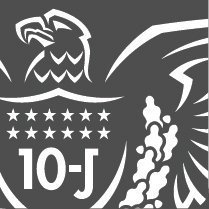Home
Jeffrey Schmid
President and Chief Executive Officer
Click here to read his remarks at The 2024 Agricultural Commodity Futures Conference in Overland Park, Kansas.
Observations from the Retail CBDCs of the Caribbean
Three retail central bank digital currencies (rCBDCs) have been issued in the Caribbean, but thus far all have struggled to achieve expected adoption from both consumers and merchants. The efforts...
Tenth District Manufacturing Activity Declined Further in March
Regional factory activity fell further in March, and expectations for future activity were again steady. Employment levels...
Tenth District Services Activity Grew Again in March
District services activity increased moderately in March, and expectations for future activity were steady. Sales growth...
The KCFSI suggests financial stress decreased slightly in March
The Kansas City Financial Stress Index (KCFSI) decreased slightly from -0.52 in February to -0.55 in March, remaining below...
New Small Business Lending Increases Despite Continued Constraints
New small business commercial and industrial (C&I) lending increased by 9.3 percent when compared to the previous quarter but...
Not Bullish: U.S. Cattle Herds Hung Up on Higher Interest Expenses
Cattle inventories declined to historically low levels at the start of 2024. Cattle producers may face challenges maintaining or restocking herds, as higher interest expenses on cattle and input...
Events
2024 Midwest Anti-Money Laundering Conference
Multi-day event, –This annual outreach event aligns bank institution's Bank Secrecy Act and Anti-Money Laundering programs with law enforcement priorities.
Banking & Supervision Forum - Casper, WY
, CDTThis in-person forum will provide an opportunity for district bankers to join us for a discussion on emerging topics and economic conditions.
Investment Connection - New Mexico 2024
– , MDTPresentations on eight new and existing community and economic development proposals from across New Mexico will be shared.
Join Us
"Besides enjoying excellent benefits, I feel empowered to influence business decisions and I have opportunities that challenge me and aid in my professional development."

Our employees rank career opportunities, people and benefits as reasons why they stay at the Kansas City Fed.
Interested in a career at the Fed?
